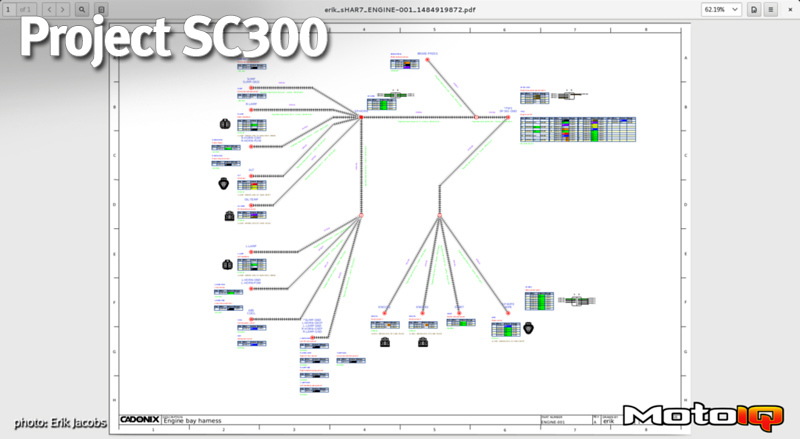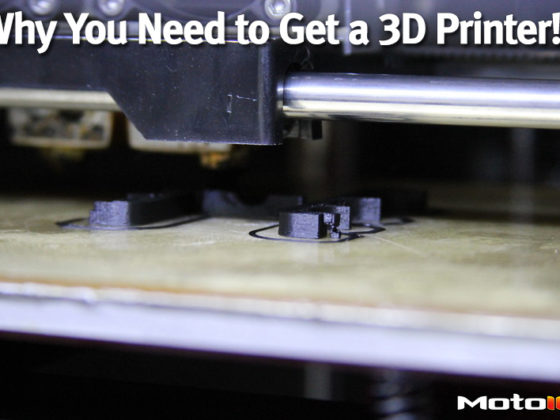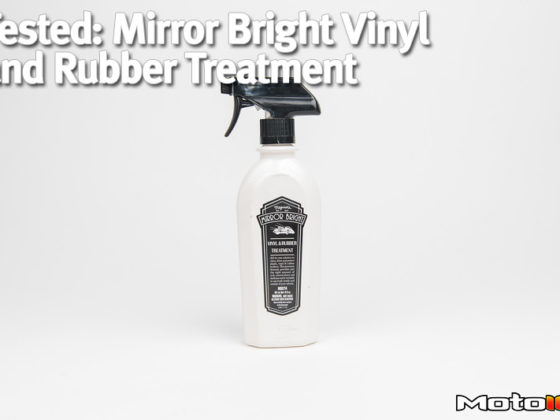,
 Milspec sockets applied and everything nicely shrinked on the harness side.
Milspec sockets applied and everything nicely shrinked on the harness side.
 The final product on the sensor side.
The final product on the sensor side.A little 2-socket DTM connector. This should have been a pin connector. Ideally you want sockets on the end of harness sections so that, if they are unplugged but powered, nothing can “get into” the pins easily to connect them.
You’ll also note that we took a little extra care with this connector to put glueline over the base in order to create a more thorough environmental seal. The DTM connector itself has seals where the wires enter the shell.
The glueline just provides a little extra insurance. Since this connector is the front fender area, it is going to see a tremendous amount of water (when it’s wet out) and debris. Every little bit helps.
 The firewall-side of the engine bay’s wheel speed sensor harness.
The firewall-side of the engine bay’s wheel speed sensor harness.A circular milspec connector, booted, and the first section of the harness with heat shrink applied. We are again using the shielded twisted Spec55 3-conductor wire here. This short length will then go into two legs, with one leg going to each wheel speed sensor. One leg is much longer and goes around the back side of the engine bay to reach the LF wheel. We did not run it around the front side of the engine bay for the same reason that we discussed earlier with the knock sensors. We want to avoid the noisy areas of the alternator and cooling fans.
Just like with the rear harness, we will run the fill shielded twisted 3-conductor wire out to the wheel sensor. This gives us some added insurance for the future. If a piece of debris strikes the harness in the exposed area but doesn’t completely mangle it, we have a spare conductor that could be used.
This leaves one more harness to build in the engine bay: The exterior kill switch.
 Starting to figure out where to put the cowl kill switch.
Starting to figure out where to put the cowl kill switch.All good race cars should have a minimum of two kill switches. One should be in the cabin, accessible to the driver, and the second should be external to the cabin, accessible to safety crew.
When we originally built our dash panel, we included a master cut-off switch with a fancy red cover. That’s for me. For the safety crew, we decided to put an exterior kill switch on the cowl, right at the windshield. This is a very common location on race cars.
We are also placing it on the driver’s side. Why? Unless I jam the car up against a tire wall on the driver’s side, a track safety worker is going to come to my side of the car first. Generally speaking, the safety crew’s first priority is the well being of the driver. Having the kill switch (and, similarly, a fire system switch) on the driver’s side in an easily accessible and easily identified location is a safety benefit.
If you remove the plastic trim panels in the cowl area underneath the hood, you find that Toyota has engineered a sturdy beam that the wiper motor and wiper assemblies mount to. This provides a great mounting location for our cowl kill switch.



